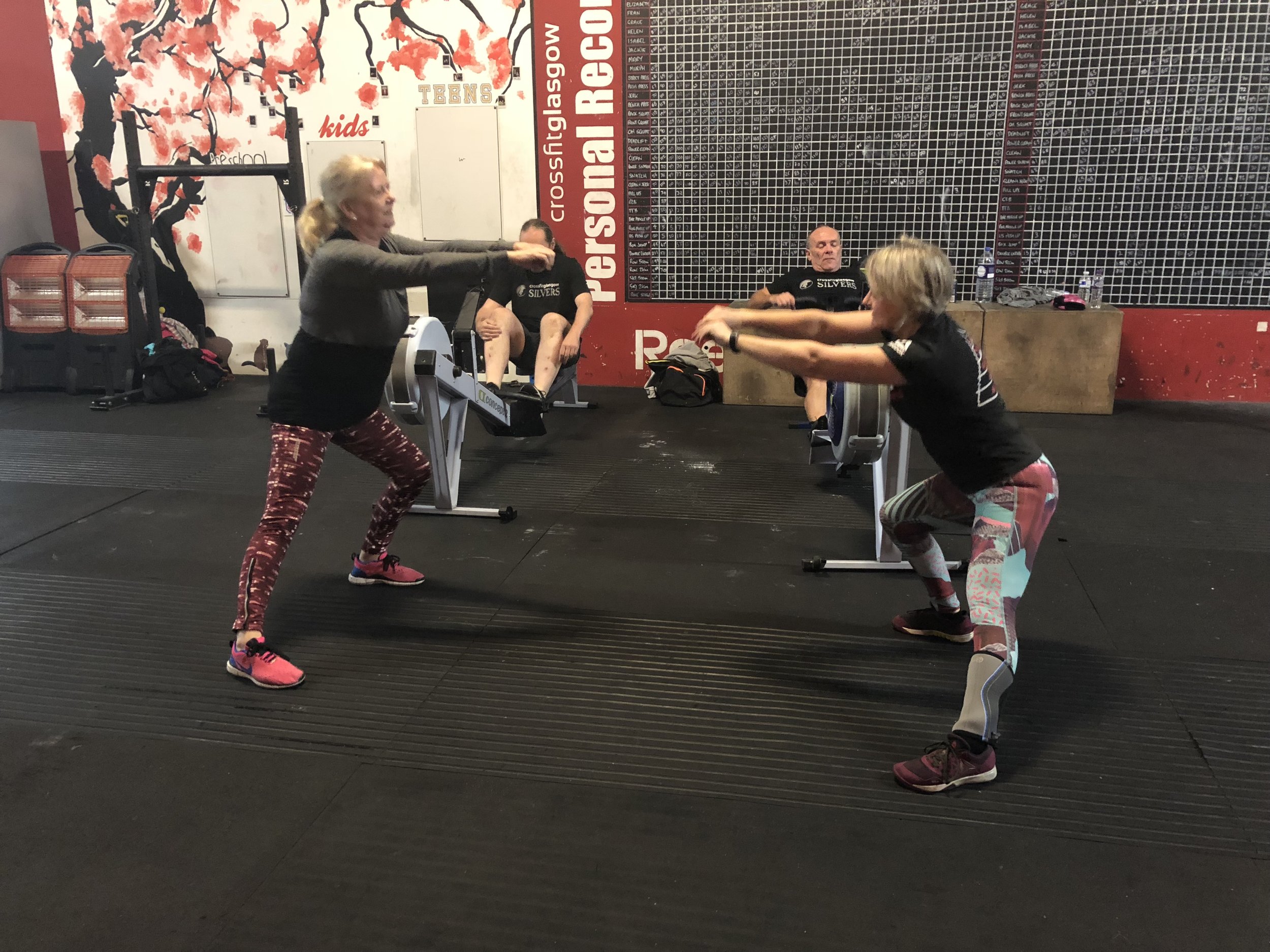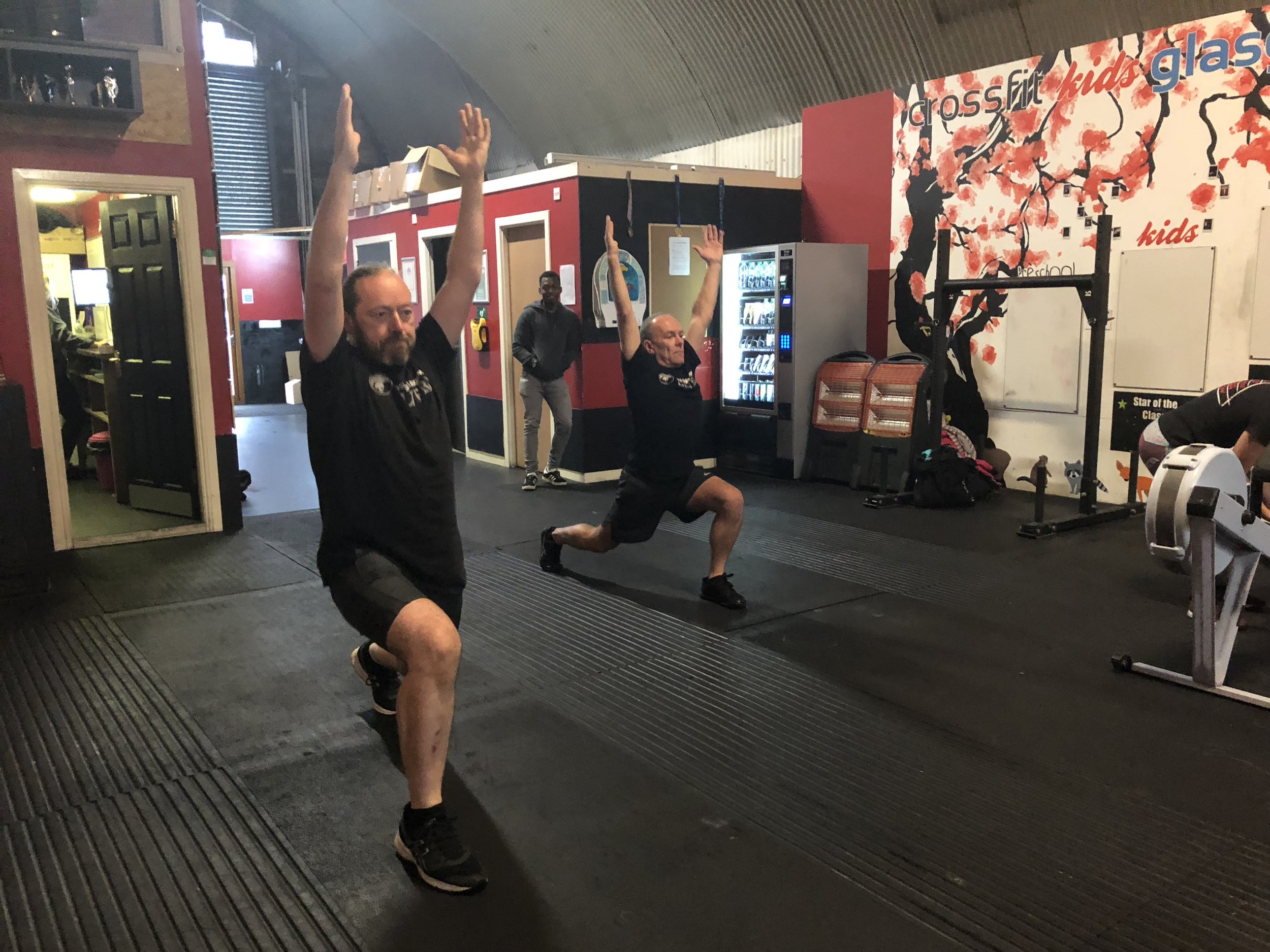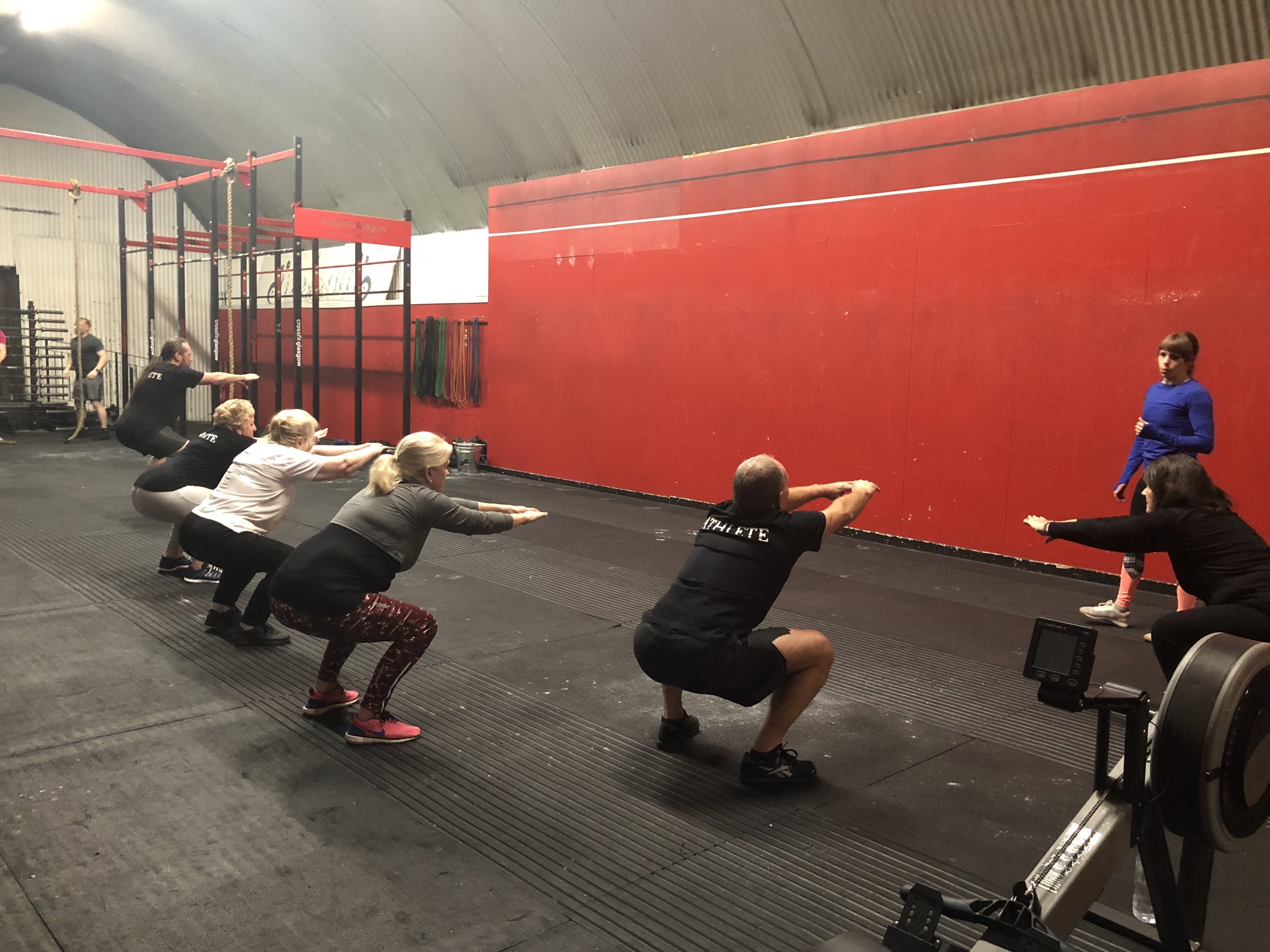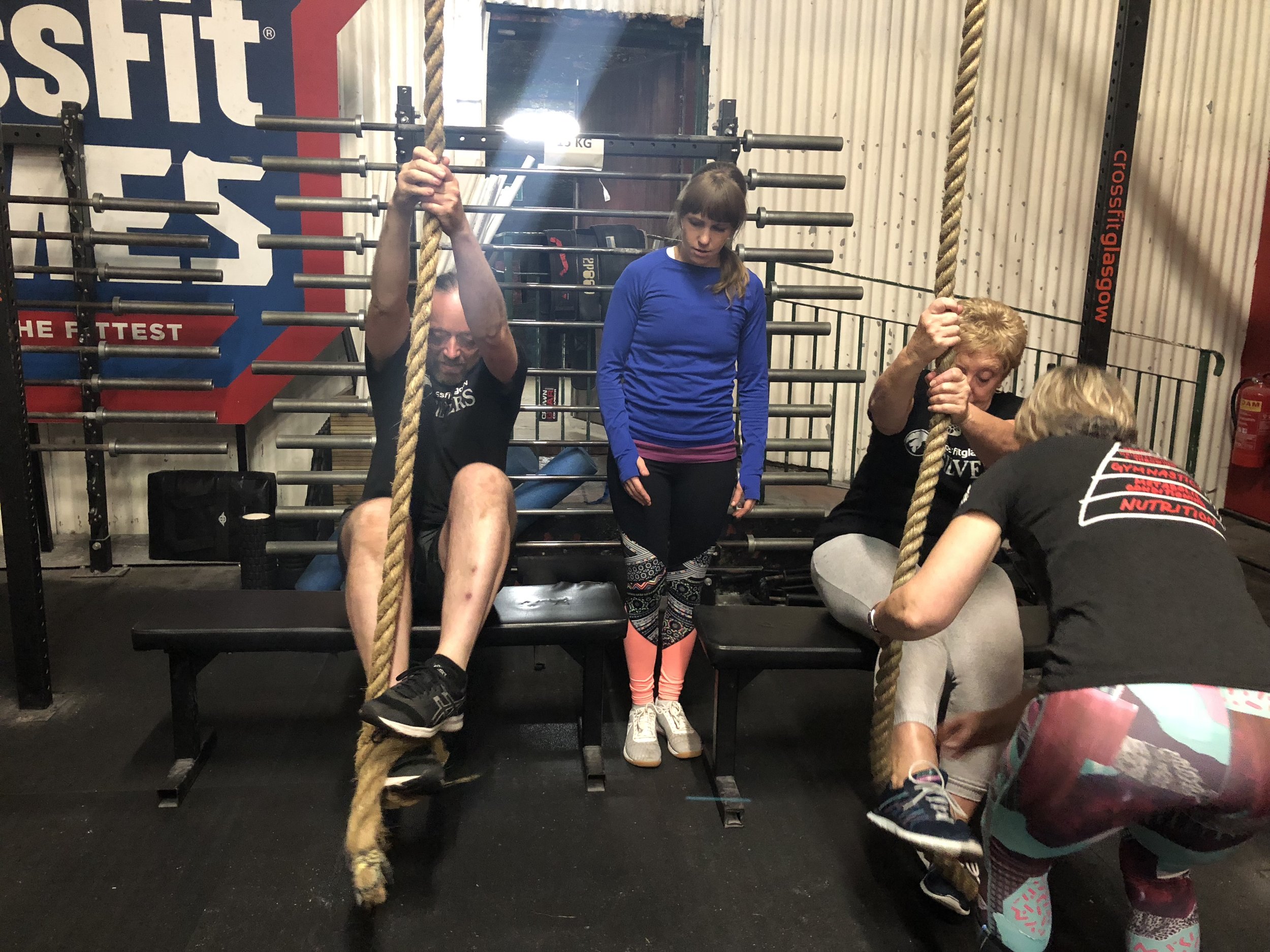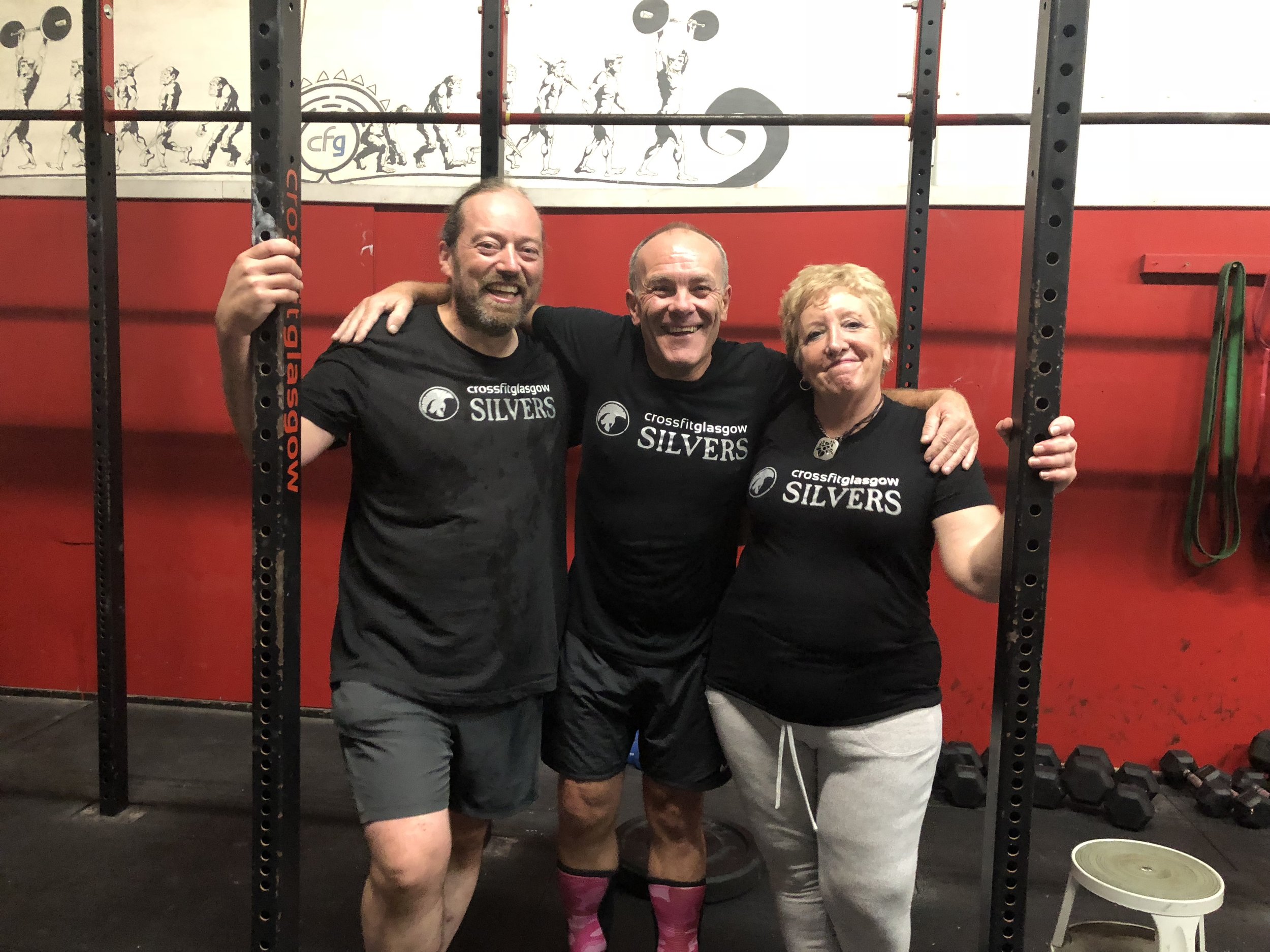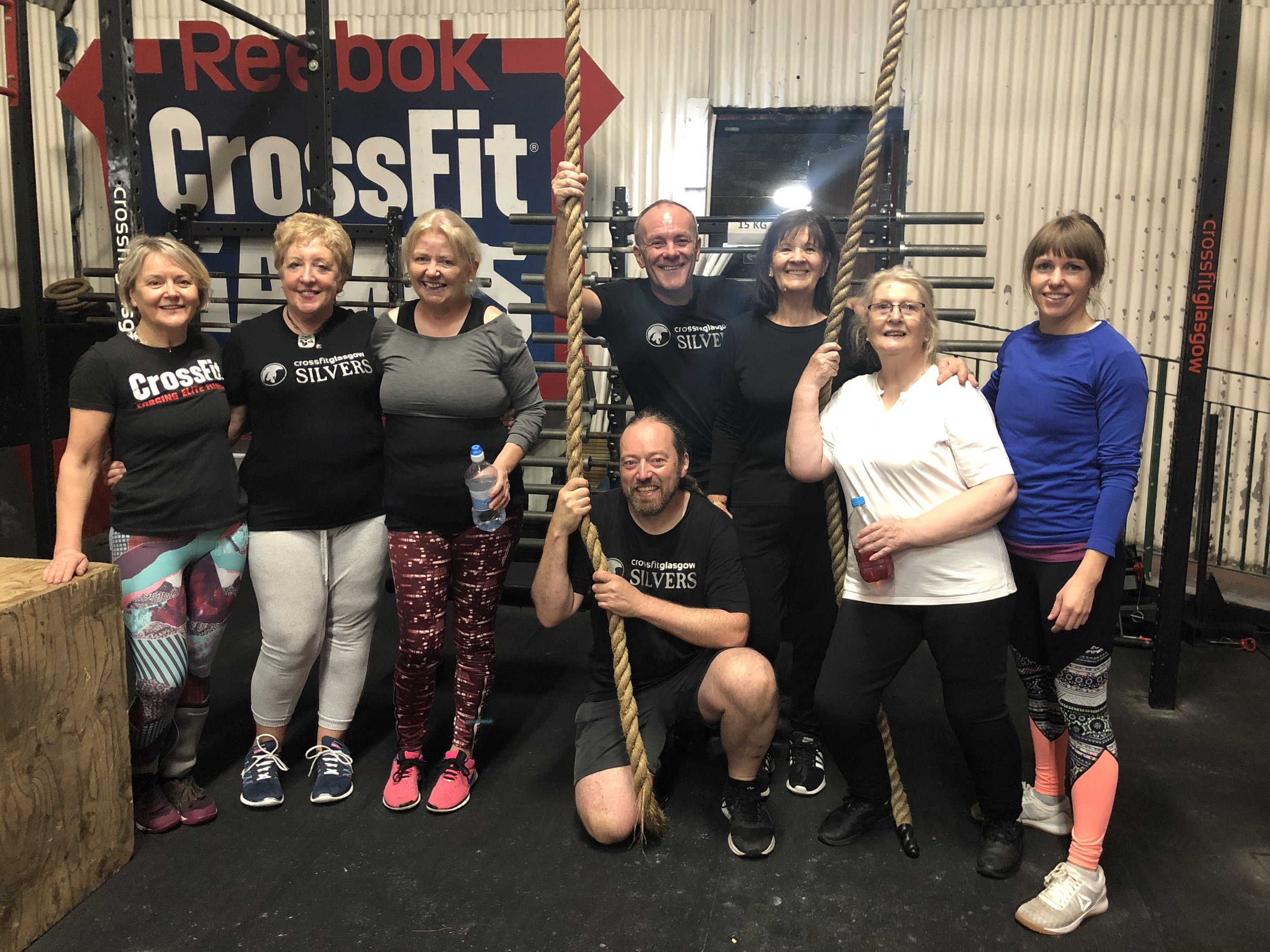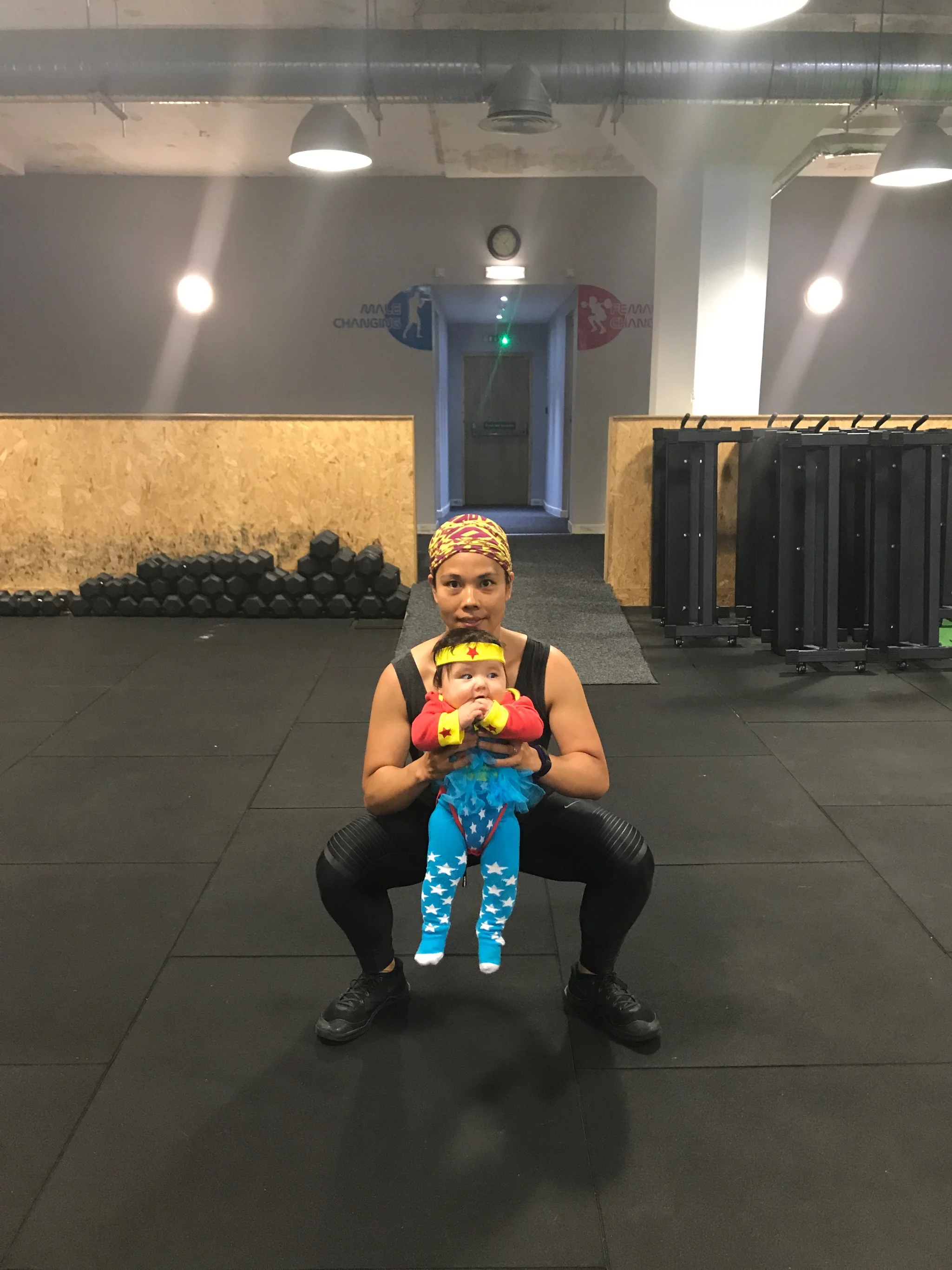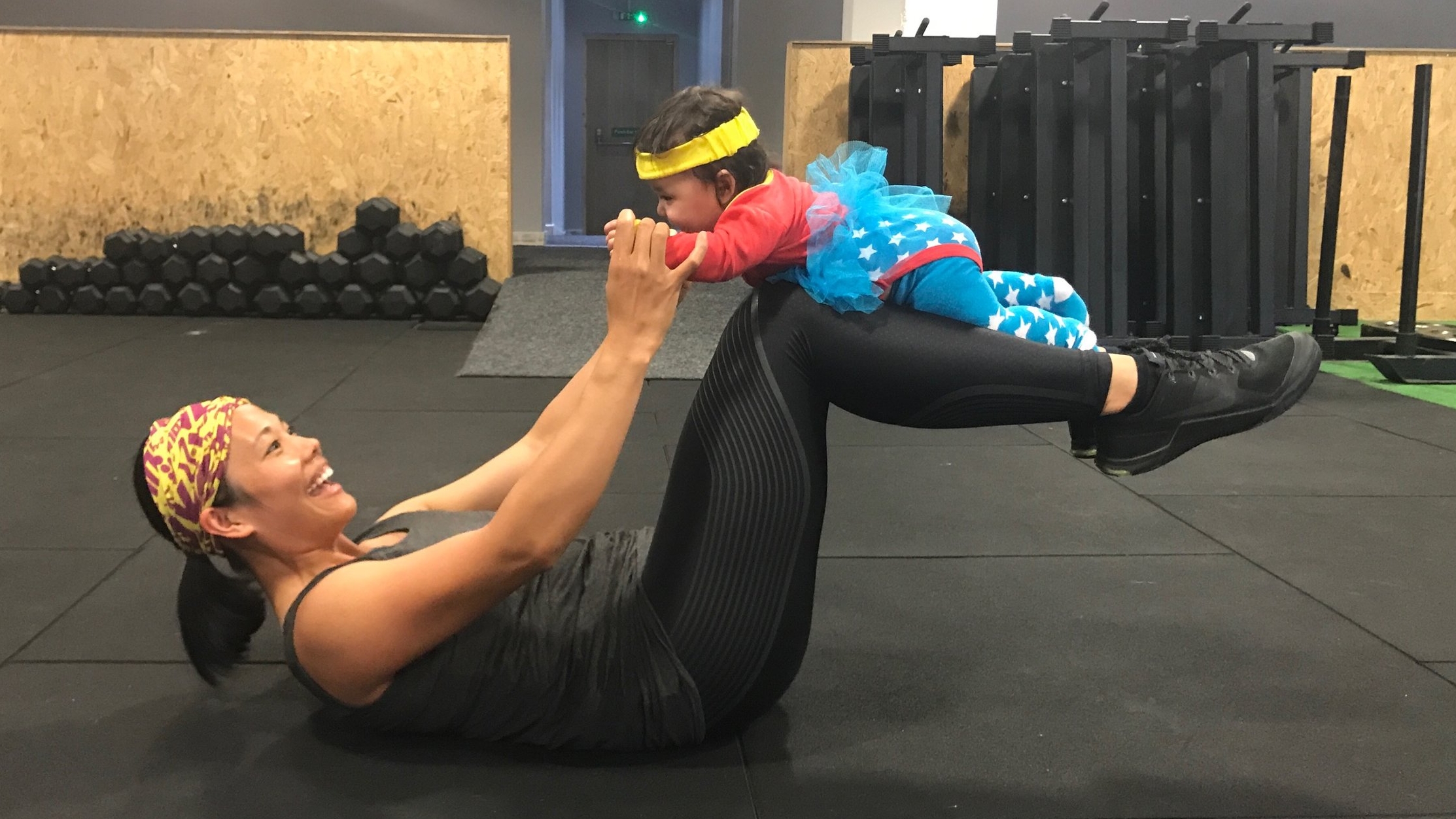Case Study: Frontal Knee Pain (Part 2)
During the initial stages of rehab, the primary focus was to maintain muscle function which can be inhibited by pain. During assessment, it was also established that Jonny was weaker on one side of his outer hip muscles (glutes) when looking at the way he balanced on one leg. The video below looks at a couple of simple exercises he worked on to improve this.
Case Study: Frontal Knee Pain (Part 1)
Knee pain is a common issue in runners. It can start off as a niggle and can easily be ignored until the point where running is no longer tolerable. This is frustrating particularly when training for a race or event. In part 1 of this month’s case study, we will look at some common physiotherapy techniques we use for pain relief in the treatment of anterior (pain in the front of) knee pain.
Jonny hurt his knee during a 42-mile Ultra Marathon which was on trail and had plenty of up and down hill sections. This caused an acute overload of the structures around his knee cap, causing pain and swelling.
Case Study: Ankle Sprain Rehab - Part 3
This concludes our 3-part series following Mariam’s ankle rehab programme after a bad sprain two weeks before her first trail marathon and then her first trail ultra-marathon five weeks after that.
Phase 1 (first 2-3 days after injury):
Ice, Elevation, Compression
Crutches
Avoidance of non-steroidal anti-inflammatories (i.e. ibuprofen)
Phase 2:
Non-weight-bearing exercises
Training modification
Progression to weight-bearing and single leg exercises
Phase 3:
Training modification
Running technique modification
Progression to plyometrics and impact loading
Case Study: Ankle Sprain Rehab - Part 2
Part 2 of our ankle rehab case-study following Mariam's injury two weeks before a trail marathon.
Part 2 of our ankle rehab case-study following Mariam's injury two weeks before a trail marathon. This is a sports physiotherapy approach to the treatment and management of an injury leading up to a specific event. In this episode, we looked at progressing her exercises and training modification leading up to the run.
Case Study: Ankle Sprain Rehab: Part 1
We all know injuries happen and, in most unfortunate instances, they can happen before a sporting event you have been training for months. It can be disheartening when you’ve spent countless hours training for such an event with the prospect of having to pull out. In this month’s case study, we will be looking at managing an ankle injury coming from a personal experience from one of our own physios, Mariam. We will be demonstrating a sports physiotherapist’s approach to dealing with an injury leading up to an event over a 3-part series. Part 1 is below:
Feeling inspired by "Silvers" at CFG!
Raz Leonard, one of our Physio Team, recently visited the older adult class at Crossfit Glasgow (CFG) and taught some specific Yoga and Pilates moves to help activate and mobilise key areas during their warm up and cool down.
Raz Leonard, one of our Physio Team, recently visited the older adult class at Crossfit Glasgow (CFG) and taught some specific Yoga and Pilates moves to help activate and mobilise key areas during their warm up and cool down.
Raz is a musculoskeletal physiotherapist, Clinical Pilates & Yoga instructor at Physio Effect and we caught up with her to hear a bit more about the class and how physiotherapy can support
Raz
Prior to becoming a physiotherapist, I was an exercise teacher and ran specialist ‘mature movers’ classes. I am fortunate to have had experience with teaching this type of class and know the importance and benefits to be even greater than exercising in other stages of life. At graduation, the other students jokingly awarded me a certificate to say ‘most likely to start CrossFit for older adults’ and so I secretly think of CFG Silvers as my own class! (sorry Viv).
What is so great about the Silvers class?
I was fully inspired at how motivated the class members were and how well they moved. Their ages ranged from 56 to 85 years old but no matter their age, they worked as hard as they could and loved it. One of the participants has had a double total knee replacement, and another has lost 11KG (1 stone 10lb) since coming to the class. The feeling of community and camaraderie is awesome as they encourage each other to do the best they can.
I feel passionate about the class as exercise becomes more and more important over time and has a vital role in helping push back the effects of ageing. This translates to being able to remain independent to do the things we love for longer. In addition, exercise is also proven to help reduce dementia, stroke, heart disease, osteoporosis and osteoarthritis to name just a few!
How can physiotherapy be helpful here?
As I’m sure we have all noticed, that age brings more ‘niggles’, aches and pains. Looking after your body is even more important. All too often people think there is nothing they can do about their pain as they think this is a normal part of the ageing process. They may have osteoarthritis for example, and been told that pain killers or surgery are their only options. As a response, people tend to give up things which they really love such as going for long walks or lifting their grandchildren. I’m really happy to share that I have helped many people in this situation with physiotherapy interventions which includes a thorough assessment, specific hands on techniques and individualised exercises. Here at Physio Effects, we regularly help patients with many conditions including sciatica, osteoarthritis, post fracture rehabilitation, shoulder/ hip/ knee pain, and back pain. If you have pain or a condition which is affecting you, please get in touch to see if we can help.
The Silvers workout is CrossFit program tailored to what the individual can do. No matter what your fitness level and capabilities, the work out will be modified to ensure you are working at the appropriate level. The coaching staff will support you step by step, through the work out which can include weight lifting, rowing, running and gymnastic movements.
“The CrossFit Glasgow Silvers group inspire everyone surrounding them and most of all me! We started Silvers a year ago and have seen every single one of them achieve things they never thought they could. We have seen changes in confidence, mindset, balance, agility, endurance and so much more and could not be prouder of this group! ”
“I was so inspired by crossfit the Glasgow Silvers that I took the Crossfit Level 1 Trainer course and now help Viv with the classes. I’m full of admiration for all the hard work that the Silvers class put in and they still have great fun.
Physioeffects have helped me over the years deal with any aches and pains with treatment and exercises I can do at home or the gym. This has undoubtedly helped me in aspects of my life including my capacity as a Crossfitter and ability to care for my family. ”
New Mummy Struggles: Exercise after Pregnancy
How one of our Physios managed getting back to fitness alongside the challenges of a new baby!
After giving birth to my first baby five months ago, life had changed as I knew it. Sleep deprivation… endless feeds… nappy changes… How does exercise fit into the picture?
I had always been a fit and active person, exercising 4-5x a week and continued to exercise right up until four days before my daughter was born. Before I knew it, I had this tiny human completely dependent on me. I felt like there was no time for anything else. Not long after I gave birth, we attended a family wedding. A family member commented that I had put on weight since having a baby and decided it was appropriate to tell me to stop eating junkfood. It was at this point I knew I had two choices: 1. Wallow in self-pity and never leave the house again 2. Find the motivation to do the things I enjoyed before having my baby. I chose the latter.
Since giving birth, I knew my body was no longer the same. I realised this after I came home from hospital and a 10-minute walk around the park felt like a marathon. As a physiotherapist who works with a lot of ante- and postnatal women, I am lucky to have the background knowledge on the human body after birth. I knew I couldn’t just jump back into what I was previously doing pre-baby. It was going to take time and patience. For the first six weeks, my exercise consisted of pelvic floor and abdominal exercises shown to me in hospital. This was all well and good when you are advised to do them every few hours, but when you’re dealing with a brand new baby; it’s the last thing on your mind! I therefore incorporated these exercises with a task I was doing constantly throughout the day - and that was feeding my baby (which was every 2-3 hours!) Every time I sat down to feed her, I made myself do them. I also went on daily walks with the buggy, which helped my mental wellbeing just to get outside the house.
After my 6-week check-up, I saw a physiotherapist who assessed my pelvic floor function and measured my belly for a diastasis recti; a condition that happens during pregnancy when the abdominal wall separates. This causes a small gap above or below the belly button. To address this, I attended mother and baby Pilates classes. Pilates focuses on the working relationships of the muscles around your trunk. These include your abdominals, diaphragm, pelvic floor and back muscles – ideal after having a baby! Being able to bring my baby along to the classes also made it easier for me not having to worry about a babysitter.
At 12-weeks, I felt I was ready to begin higher intensity exercise. After we put the baby to bed at night, I would go for a light jog for 15-20 minutes and gradually increased this as I felt comfortable. Thankfully having a baby in the spring meant long daylight hours for me to head out. I also joined a mother and baby bootcamp-style class, which incorporated strength and resistance exercises as well as high intensity interval training.
Common post-pregnancy myths that need to be debunked:
It’s normal to wee myself a little bit sometimes because I’ve had a baby
False: Incontinence post-birth is a sign of pelvic floor dysfunction and could indicate a prolapse. It is important to get this assessed by a women’s health physiotherapist to avoid long-term problems.
It’s normal to have back or pelvic pain because I’ve just had a baby
False: You may be in pain because of muscle imbalances and weaknesses. Seek advice from your physiotherapist for treatment and exercises to address any issues.
I’ve had a C-section so I don’t need to strengthen my pelvic floor
False: Your pelvic floor, regardless of how you gave birth, has been through a lot! It has carried the weight of your baby, the placenta and a 50% increase in blood volume for 9 months. This will greatly affect its ability to do its job properly compared to pre-pregnancy function.
Doing lots of ab-crunches and “planks” will help me get a flat tummy
False: These types of exercises should not be performed early on after birth as they cause excessive force on the abdominal wall, which may actually increase separation. It is best to strengthen the deeper abdominal muscles first with Pilates-type exercises.
It is important to remember that every woman is different. Exercise timescales are determined by your previous level of fitness, the type of birth you experienced and take into account any complications thereafter. Seek advice from your physiotherapist before commencing an exercise regime.
At Physio Effect we provide physiotherapy throughout your pregnancy journey and beyond. This includes ante- and postnatal assessment, treatment and physio-led Pilates classes. Our partners at Everyday Athlete Gym also run special mother and baby exercise classes.
Click here to see more about our ante- and postnatal services here at Physio Effect
One of our physios Mariam Kilpatrick with wonder-baby Aria
The Tool of our Trade
A revolutionary treatment technique used in physiotherapy is the use of an instrument or a tool, which enables the physiotherapist to locate and treat an area of soft tissue dysfunction. The official term is called Instrument Assisted Soft Tissue Mobilisation or IASTM.
IASTM - What is it?
A revolutionary treatment technique used in physiotherapy is the use of an instrument or a tool, which enables the physiotherapist to locate and treat an area of soft tissue dysfunction.
The official term is called Instrument Assisted Soft Tissue Mobilisation or IASTM. The technique itself is said to have evolved from the traditional Chinese Medicine technique called Gua Sha. However, Gua Sha uses the principle of Meridians to move the bad “Qi” out of the body. You could perhaps say that IASTM is a modernised version of Gua Sha using anatomical reasoning. IASTM is growing rapidly in popularity due to its effectiveness and efficiency in treating musculoskeletal conditions while remaining non-invasive compared to other treatment techniques such as Trigger Point Dry-Needling or Acupuncture.
IASTM is performed using an ergonomically designed tool most commonly made of stainless steel. The tool is used to detect and treat fascial restrictions, effectively treat scar tissue, chronic inflammation and/or degeneration. As with any physiotherapy treatment, the use of IASTM is also supplemented with exercise prescription and additional methods such as joint mobilisation designed to correct any biomechanical issues by addressing musculoskeletal strength and muscle imbalances or weaknesses.
IASTM Tooling around the knee at Physio Effect
How Does IASTM Work?
Soft tissue injury involves damage to muscles, ligaments, tendons and fascia (connective tissue) somewhere in the body. Common soft tissue injuries usually happen after a sprain, strain or a blow to the body resulting in ruptured blood vessels or overuse of a particular body part. Soft tissue injuries can result in pain, swelling, bruising and loss of function. Adhesions within the tissue may develop as a result of repetitive strain/overuse, surgery, or immobilisation.
Often, people with soft-tissue injuries do not seek out treatment until the injuries have become chronic (weeks/months after injury). By this point, the body has completed most of its self-healing process. Scar tissue and adhesions are formed during this healing process, which limits motion and often causes pain. Scar tissue and adhesions essentially act like super glue in your body. When scar tissue is created after injury, new cells are laid down excessively and in a disorganised manner. Scar tissue/adhesions prevent the muscle or other tissues from lengthening appropriately. It is often necessary to restart the healing process in order to remodel the soft tissues in the affected area. By introducing controlled micro-trauma to affected soft tissue using IASTM, a local inflammatory response is stimulated. This micro-trauma initiates reabsorption of inappropriate or excessive scar tissue and facilitates a remodelling of the affected soft-tissue structures. After IASTM treatment, scar tissue can be remodelled so that the cells become organised in a direction that better promotes movement.
The ergonomic design of the tool used for IASTM provides the physiotherapist with the ability to locate these soft tissue restrictions and allows them to treat the affected area with the appropriate amount of pressure.
What should I expect after an IASTM treatment?
It is important to note that IASTM’s ability to reinitiate healing comes from the fact that it is essentially re-injuring the body (although to a lesser degree and in a controlled manner). This may cause mild discomfort during the procedure. There may be soreness in the treatment area for a day or two following treatment and occasionally bruising may occur.
What are common conditions treated with IASTM?
Tennis or Golfer’s Elbow
Neck or Back Pain
Plantar Fascitis
Rotator Cuff , Achilles or Patella Tendinopathy
DeQuervain’s Tensosynovitis
Post-Surgical Scars
Ligament Sprains
Muscle Strains
IT Band Syndrome
Shin Splints
Chronic Ankle Sprains/Stiff Ankle
Arthritic Pain
What are the benefits following IASTM?
Improved range of motion
Improved muscle strength and function
Altered pain perception and reduction of pain
IASTM is a common treatment technique utilised by the therapists at Physio Effect. The dedicated team at Physio Effect provides a full package of services that will ensure you’re supported through injury prevention, assessment, recovery and helping you achieve your ultimate performance goals.
Dry Needling: The most effective pain treatment you may never have heard of!
Dry needling is a type of acupuncture that has become very popular with physiotherapists in recent years in our treatment of injury and pain.
Dry needling is a type of acupuncture that has become very popular with physiotherapists in recent years in our treatment of injury and pain. Also known as Western Medical Acupuncture, Dry Needling differentiates itself from traditional acupuncture by being administered to soft tissue structures such as muscles and fascia (connective tissue) in order to stimulate the central and peripheral nervous systems. This results in the release of pain relieving substances within the body, which can desensitise painful structures as well as the loosening of excessively tight muscles, therefore restoring movement and function and facilitating a healing response. Dry needling is often used in conjunction with other treatment techniques as part of a treatment plan. This is different from traditional Chinese Medicine type Acupuncture which places needles along meridian lines and is based on a model of treating and restoring energy flow within the body.
Why is it called Dry Needling and how does it work?
This was to differentiate it from the more traditional western medicine approach to treating painful muscles and joints that involved the use of a hypodermic needle to inject a medication such as a steroid solution.
Dry needling uses only a thin acupuncture-type needle to stimulate and deactivate myofascial trigger points, muscles and connective tissues. This can also have both diagnostic and treatment benefits whenever a practitioner is attempting to address problems in deeper muscles and structures that massage techniques cannot be effective at reaching.
Myofascial Trigger Points can be found to be causing pain in nearly every musculoskeletal pain problem. (Myo=Muscle; Fascia=Connective tissue - the term ‘myofascia’ describes that area). These trigger points present as hypersensitive localised muscle tenderness that can also cause prolonged ache in a more widespread area. They can arise from overloading and overuse of muscles and structures such as in sport or after trauma, or even while sitting with a poor posture with the example being pain to the neck or back. As well as pain, myofascial trigger points can cause weakness of the affected muscles and restrict range of movement, both which can contribute to other problems and compensations developing.
Generally as the needles used are so thin, a patient can often not even feel the needle being inserted. When dry needling is administered effectively to a myofascial trigger point the patient may experience a local twitch response from the muscle. This instantaneous involuntary contraction confirms the presence of a myofascial trigger point and the practitioner may stimulate this twitch response a number more times manually using the needle or via an electrical current from a TENS machine to successfully deactivate.
Results can often be instantaneous when assessing restricted ranges of movement in muscles and joints and your practitioner will often demonstrate this with before and after treatment testing.
After a dry needling treatment a patient may instantly experience improvement in their pain and dysfunction being treated however it is quite common to experience muscle soreness around the needle site for between 24-48 hours. This post treatment soreness, however, is comparable to what can be expected from most hands-on therapies such as deep tissue massage.
As dry needling is administered in a clinical environment by highly trained and regulated physiotherapists, it should be considered to be a very safe treatment option and your clinician will have taken every precaution to minimise risk of injury or infection from the needle. It would however not be advisable to try for anyone who suffers from a significant phobia of needles.
Injuries and conditions to consider dry needling with:
Postural and work-related pain
Sports injuries affecting all muscles and joints
Muscle and Joint Tightness
Disc injuries
Migraines and Tension-Type Headaches
Tendon Injuries
Fibromyalgia and Complex Regional Pain Syndrome
Do you want to be a part of the Physio Effect Dragon Boat team?
Come and be a part of the Physio Effect Dragon Boat team on August 25th!
We are very (probably more than we should be to be honest!) excited to announce that we have signed Physio Effect up to the Dragon Boat race at this year's Canal Festival!
The festival will run from 10:00 - 17:00 on Saturday, 25th August and each team will take part in at least 3 heats - culminating in finals if we get there!
Last year, the festival's first, our pals (and mortal enemies for the day of the race this year, naturally!) at EveryDay Athlete gym won the Dragon Boat race, so they'll be defending their title this year and we'd LOVE to give them a run for their money!
So, if you're available on the day and would like to be a part of this fun event - we need lots of people to join us!
contact us here and let us know!
Crybaby Classes: Post-Natal Pilates Classes at Physio Effect!
Our Post-Natal Pilates class is designed for new mums from 6 weeks post-partum (8-weeks if by C-section) and onwards. The class is designed to help heal and strengthen muscles affected after pregnancy and labour such as your pelvic floor and abdominals.
Our Post-Natal Pilates class is designed for new mums from 6 weeks post-partum (8-weeks if by C-section) and onwards. The class is designed to help heal and strengthen muscles affected after pregnancy and labour such as your pelvic floor and abdominals. This class can also help manage back pain, pelvic girdle pain, improve continence and treat abdominal separation (diastasis recti). The added bonus is you are welcome to bring your baby along to the class while you exercise.
How do I get started?
For first-timers, you will be required to have a post-natal 1:1 assessment with one of our physiotherapists. This can be booked after you’ve had your 6 week check-up from your physician and given the all-clear to start exercising (usually a little longer if you've had a C-section). During this consultation, you will be able to discuss your pregnancy, labour and set some goals you’d like to achieve after having your baby. The physiotherapist will assess your pelvic floor and abdominal function and go over some basic, fundamental Pilates exercises in preparation to starting the classes. This appointment usually takes 30 minutes and you are welcome to bring your baby along.
When are the classes?
The classes are every Tuesday and Wednesday and run over a 6-week or a 12-week block. Each class lasts an hour. If you would like to start the classes in the middle of a current block, there is an option to pay per class depending on available spaces. The class number is small with a maximum number of 8 mums per class. Please get in touch to find out when the next block is.
How much does it cost?
Physiotherapy post-natal Assessment (if you are attending for the first time): £30
6-week block: £60
12-week block: £110
If you would like to pay per class, for example, if you cannot attend all classes in the block or if you are joining in the middle of an existing block, it would cost £12 per class depending on available spaces (we take a maximum of 8 mums per class).
Up until what age can I bring my baby?
You are welcome to bring your baby up until they are able to crawl/move about (which can be different for every baby, of course!). Otherwise you may find it difficult to do your Pilates exercises.
Are your facilities buggy friendly?
Our Pilates studio is located within the EDA Gym which has ramps for easy buggy access. The studio has ample space for your buggy and there is a lounge area and café where you can buy water/coffee/tea and snacks.
What other Ante- and Post-Natal Services do you provide at Physio Effect?
Here at Physio Effect, we have a number of therapists specially trained to help you through your pregnancy journey and after you've had your baby. Click here for more info on our other services
“Fantastic Pilates class that has helped me regain confidence, strength and my figure after having my son. Mariam is very skilled and knows exactly how to fine tune the exercises to suit individual needs. It is a particular bonus that you can take your baby along and Mariam is on hand to lend a cuddle if one of them is unhappy. There is also a cafe onsite where the group enjoy a coffee and a natter after the class. I would not hesitate to recommend”
European Championships - Glasgow Time Trial - Road Closures
Glasgow Road cycling time trials are happening on Wednesday August 8th 2018 as part of the European Championships - there will be road closures and disruption to travel plans so please read more to find out whether it will affect you.
We are excited for Glasgow to host the European Championships this year!
On Wednesday, August 8th, the Road Cycling Time Trial will take place and road closures are going to cause disruption to traffic and travel options.
Please have a look at the image below and this Road Closures list to make sure you're not stuck and unable to get to or from your appointment!
We got a new piece of kit in our Studio!
Watch Nicki demonstrating our new Pilates Reformer in our Northside Studio!
We are very excited to get a reformer for our studio here at our Northside Clinic in Port Dundas - read more about the reformer here and see Nicki, one of our Massage Therapists demoing it below!











